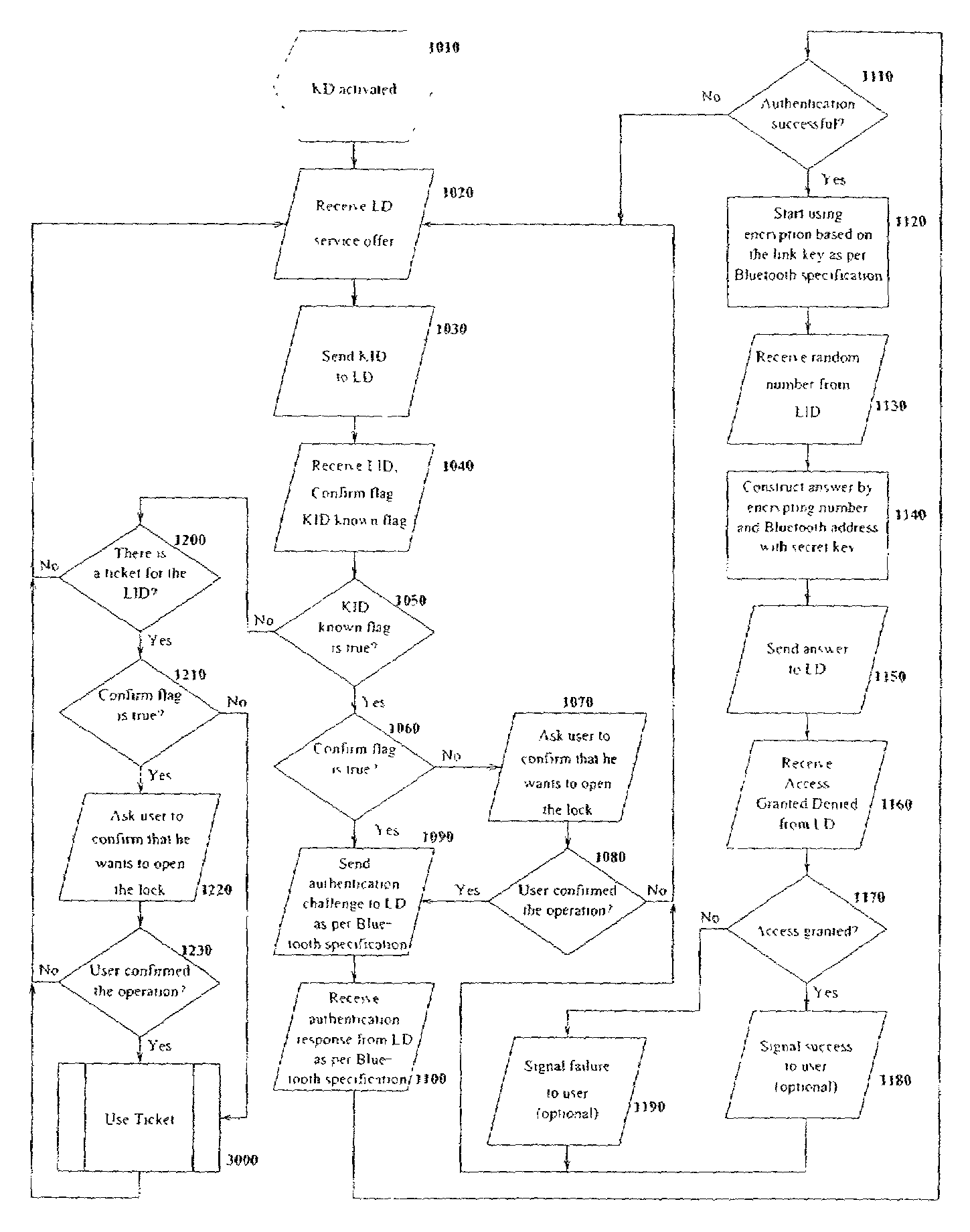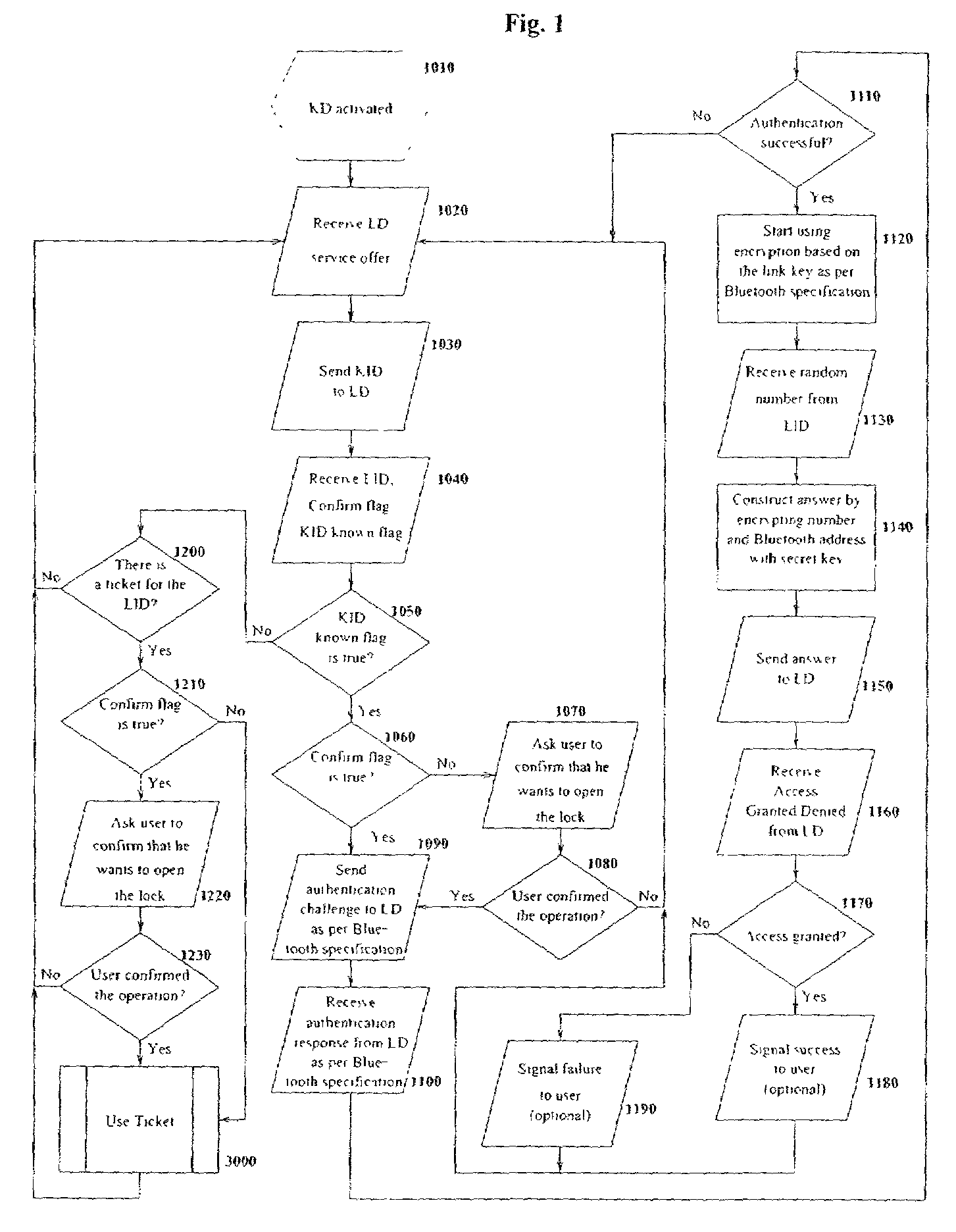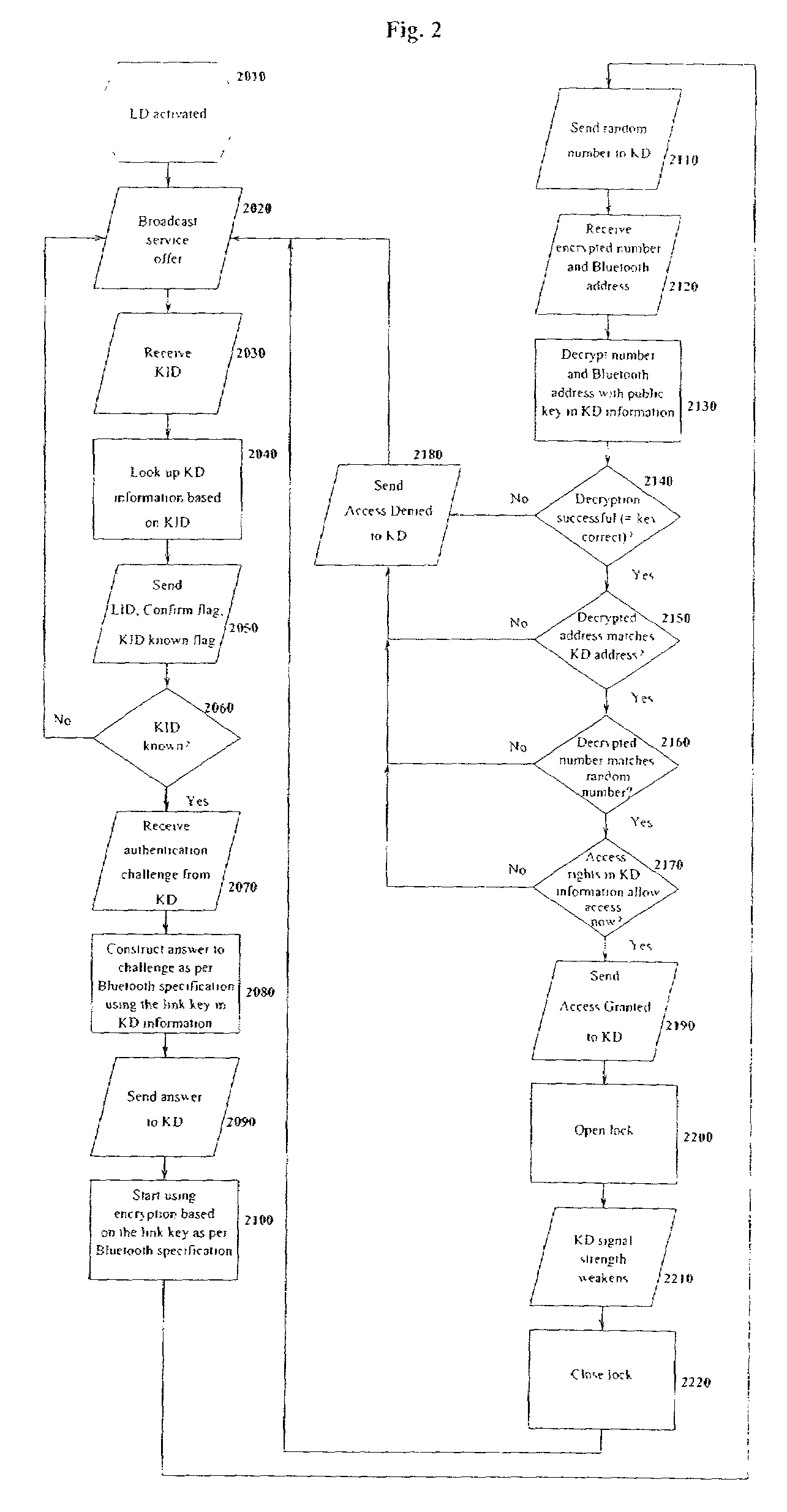Wireless lock system
a key system and wireless technology, applied in the field of wireless lock and key system, can solve the problems of inability to easily limit the use of keys, inability to validate keys, and user still having to carry many keys, so as to minimize the need for control panels, reduce the need for key and lock devices, and increase security
- Summary
- Abstract
- Description
- Claims
- Application Information
AI Technical Summary
Benefits of technology
Problems solved by technology
Method used
Image
Examples
Embodiment Construction
[0054]The basic environment of the embodiment of the present invention is to utilize an electronic key for wirelessly opening an electronic lock. The key is carried on a person either as part of his wireless telephone or as a separate unit which can be carried or worn on his person, such as in a belt buckle or in a piece of jewelry. When a person approaches the lock, his presence is sensed. Either the lock or the key may initiate the transaction. In a preferred embodiment the lock transmits a signal to see if a key is carried by the person. The lock sends a random data signal to the key. The key encrypts this data and sends it back to the lock. The lock decrypts the signal and, if it matches the original signal, opens the lock.
[0055]The encryption uses an encryption key pair system, with the public key being carried in the lock and the private key being carried in the key. This allows the user to use a single key for multiple locks. Thus, his public key may be stored in any number o...
PUM
 Login to View More
Login to View More Abstract
Description
Claims
Application Information
 Login to View More
Login to View More - R&D
- Intellectual Property
- Life Sciences
- Materials
- Tech Scout
- Unparalleled Data Quality
- Higher Quality Content
- 60% Fewer Hallucinations
Browse by: Latest US Patents, China's latest patents, Technical Efficacy Thesaurus, Application Domain, Technology Topic, Popular Technical Reports.
© 2025 PatSnap. All rights reserved.Legal|Privacy policy|Modern Slavery Act Transparency Statement|Sitemap|About US| Contact US: help@patsnap.com



